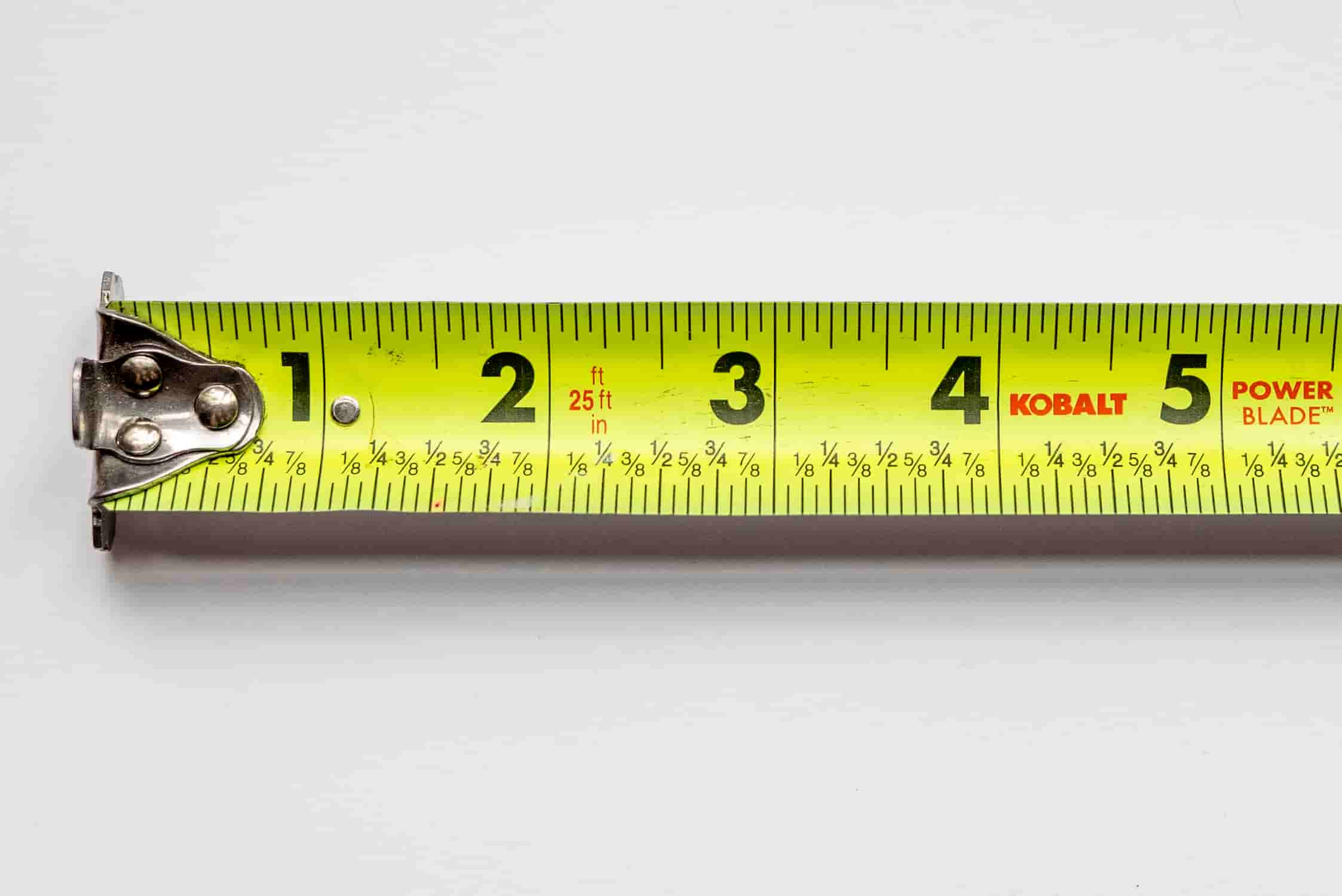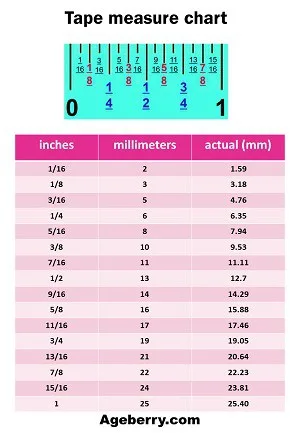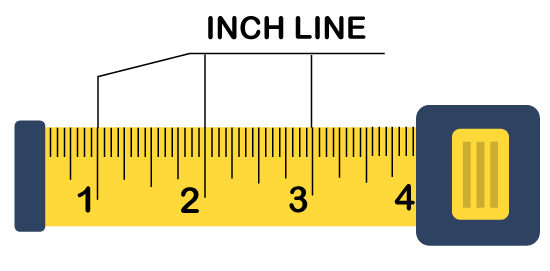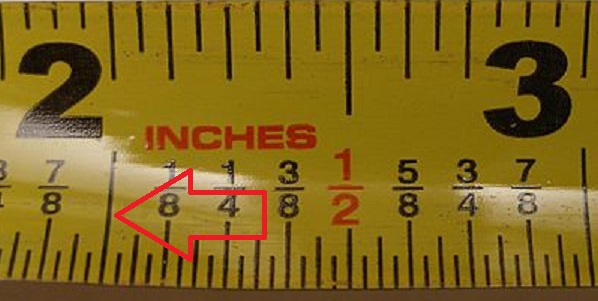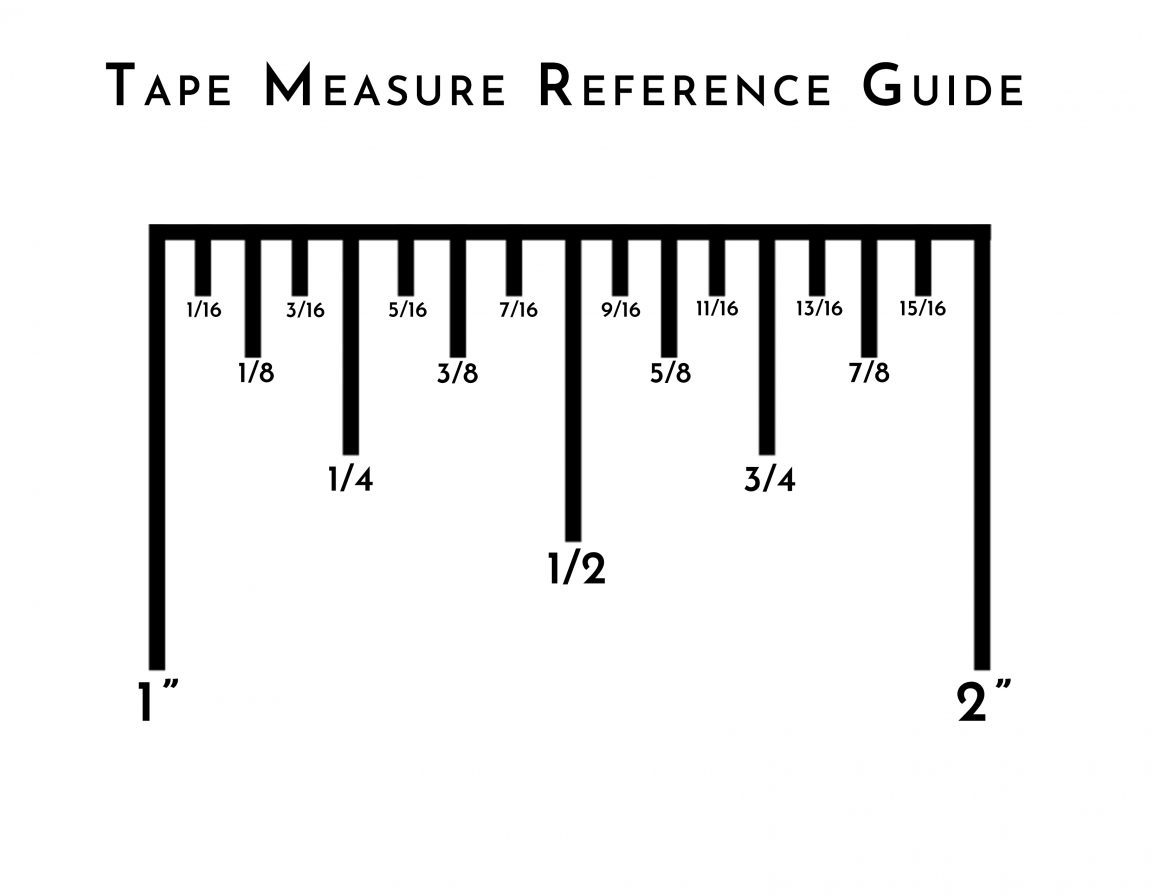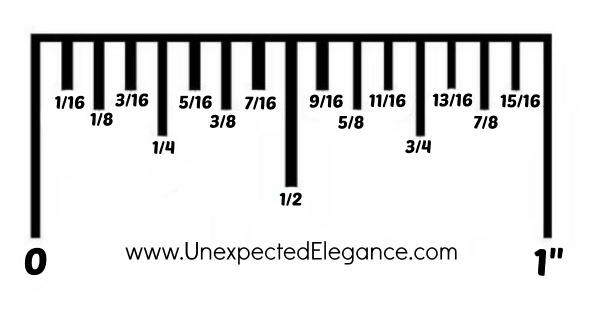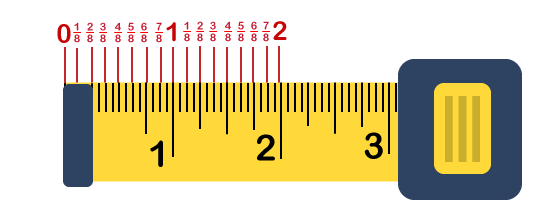Tape Measure Markings Chart
What Do Those Markings Mean.
Tape measure markings chart. Use the big numbered markings for centimetres. These measurements are the same as 216 616 1016 and 1416. They usually come in lengths from 6 feet to 35 feet long.
Most standard tape measures in the US. Some tapes measure from 32 to 64 marks to the inch. To find 116 316 516 716 916 1116 1316 or 1516 on a tape measure locate the smallest marks they each correspond to 116 of an inch.
Tape-Measure Markings Chart The tape measure for sewing is usually soft and flexible stripribbon with linear-measurement markings made mostly from reinforced polyester or fiberglass. This relates to the tape measures quoted level of accuracy. 16 rows Tape measure markings represent lengths in inches and fractions of an inch.
An inch is divided into 2 4 8 16 equal parts so the measurement in inches is something like 2 38 or 5 316. When reading a tape measure find the closest whole inch to the end point. In an effort to make this the least confusing as possible were going to simply start with the largest measurement 1 and work our way down to the smallest measurement 116.
The markings on it are applied with the main divisions with an interval of 1 inch and intermediate ⅛ or 116 in. Tape measures are commonly used in construction architecture building home projects crafts and woodworking. Throw the end of the tape measure into the corner or hook it onto the end of the wall and extend the tape measure out as far as you need to.
Think about it like this each time the bottom. On most metric measuring tapes centimetres are the most prominent markings. The whole number measurements like 1 inch 2 inch 3 inch etc.
Measuring tape with extension 24 in 60 cm Letter paper 13 31 32 33 34 35 36 37 38 39 40 41 42 43 44 45 46 47 48 49 50 51 52. 18 38 58 78. This is marked in red on many tape measures.
Reinforce the back of the measuring tape with a ribbon or thin strip of cloth using clear tape. Quarter inches eighth inches and sixteenth inches. The most common length of a measuring tape is 60 inches or 152 cm but there are tapes for sale for example 100 inches long 254 cm or even longer 120.
EC levels of accuracy Class 1 or Class 2 state that a tapes blade is accurate to that particular standard at a temperature of 20C at a pulling force of 50N Newtons. A tape measure is a roll of metal tape with evenly graduated markings used for measuring. Have markings that measure down to 116 of an inch.
So when you look at the tape measure the 1 marks are the largest going at least halfway down the tape width and the 116 marks are smallest. Have markings that measure down to 116 of an inch. 18 38 58 78 increments spoken as one-eighth of an inch etc 116 316 516 716 916 1116 1316 1516 spoken as one-sixteenth of an inch etc You will also find some tape measures that include the 132 markings as well which is 32 little lines in between the inch markings.
As you can see in the above tape measure infographic the line markings from longest to shortest represent. A half of an inch. As the increments decrease so does the length of the mark.
And the decimal point doesnt make real sense for inches. On some tapes quarter inch marks are the same size as eighth-inch marks. Centimetres are usually labeled with.
Use clear tape to join ends to form one long measuring tape. Whereas the 16-inch markings provide. The quarters of an inch.
The tape is often yellow and rolled in a plastic case. Most standard tape measures in the US. The numbers increase the farther down the tape measure you go.
Line up along registration marks folding grey ends under. These are the incremental markings that measure inches starting from the end of the tape. The studs should be located at each of those red numbers.
If your measurements exceed the length of this measuring tape print two and join them together. The measurements on a tape measure are generally 16 marks to the inch. They indicate truss layouts of every 19 316 inches.
20C being the temperature of the laboratory where the. This eliminates the need to convert inches to feet yourself. This means you can measure up to 116 of an inch.
But these black diamonds are important as they are truss or black truss indicators. In the unlikely event that someone notices them at all they wont seem to have any rhyme or reason being at 19-316 around 38-1332 then 57-1932 and so on. Some have special markings every 3 feet as well.
Laser distance measurers can often measure accurately within 116 inch. For example ½ has a bigger mark than ¼ which has a bigger mark than ⅛ and so on. The eighths of an inch.
Each large tick. Tape measures often use small black diamond or triangle shapes called black truss marks. Of all tape measure markings the black diamonds are the most curious.
These are smaller sometimes thinner markings evenly spaced between the half-inch and inch marks on a tape measure. Many tape measures will have 1 foot marks every 12 inches. Many tape measures feature the marks 20C and 50N near to the tip of the blade.







